Up Next

Since I first became involved in Formula 1, there have been many changes to the regulations. Engines have been the big talking point in recent times and, over my time, we have gone from three-litre normally aspirated to smaller-capacity turbos, back to atmospheric engines then to KERS-assisted ones before what we have now – the 1.6-litre V6 turbocharged unit with ERS.
The reasoning for all these changes can be confusing, but that’s nothing compared to the many chassis regulations. These tend to go round and round in circles – faster cars to slower cars to faster cars, full ground effect to no ground effect to some ground effect, no refuelling to refuelling to no refuelling, big wings, high wings, low wings, multi-wings etc. I could go on forever, but the search has always been for a set of regulations that improve the on-track racing.
Improving the racing was always on the agenda, but it wasn’t the prime mover until the 2009 technical regulations. To create these rules, F1 set up a small group of engineers and called them the ‘Overtaking Working Group’, with each team chipping in with a contribution of around £50,000 to fund the research. They come up with many changes, but focused mainly on the front wing.
These changes were supposed to improve the ability of one car to follow another. When I first saw the proposals, my comment was that it looked like a study done by a first-year aerodynamics student. That’s no criticism of the ability of a first-year student, but having been involved in F1 for a few years you could very quickly see that it wouldn’t take long for the experienced design engineers to drive some very big holes through these proposals.
That’s exactly what happened and the rule changes did nothing to improve the on-track racing.
That’s 12 years ago and, as we know, other than the time it takes for a car to get round the track, very little happens quickly in F1. During that period, along came the 2014 hybrid era and then the introduction wider tyres and higher downforce for 2017. Neither of these improved racing and actually made it worse. Anyone who thought introducing changes to make the cars wider which would generate more turbulence, reducing the braking distances and increasing the cornering speeds whilst still running on the same-width circuits would improve overtaking was out to lunch. Yet more downforce and faster cars was seen as the solution to F1’s ills.
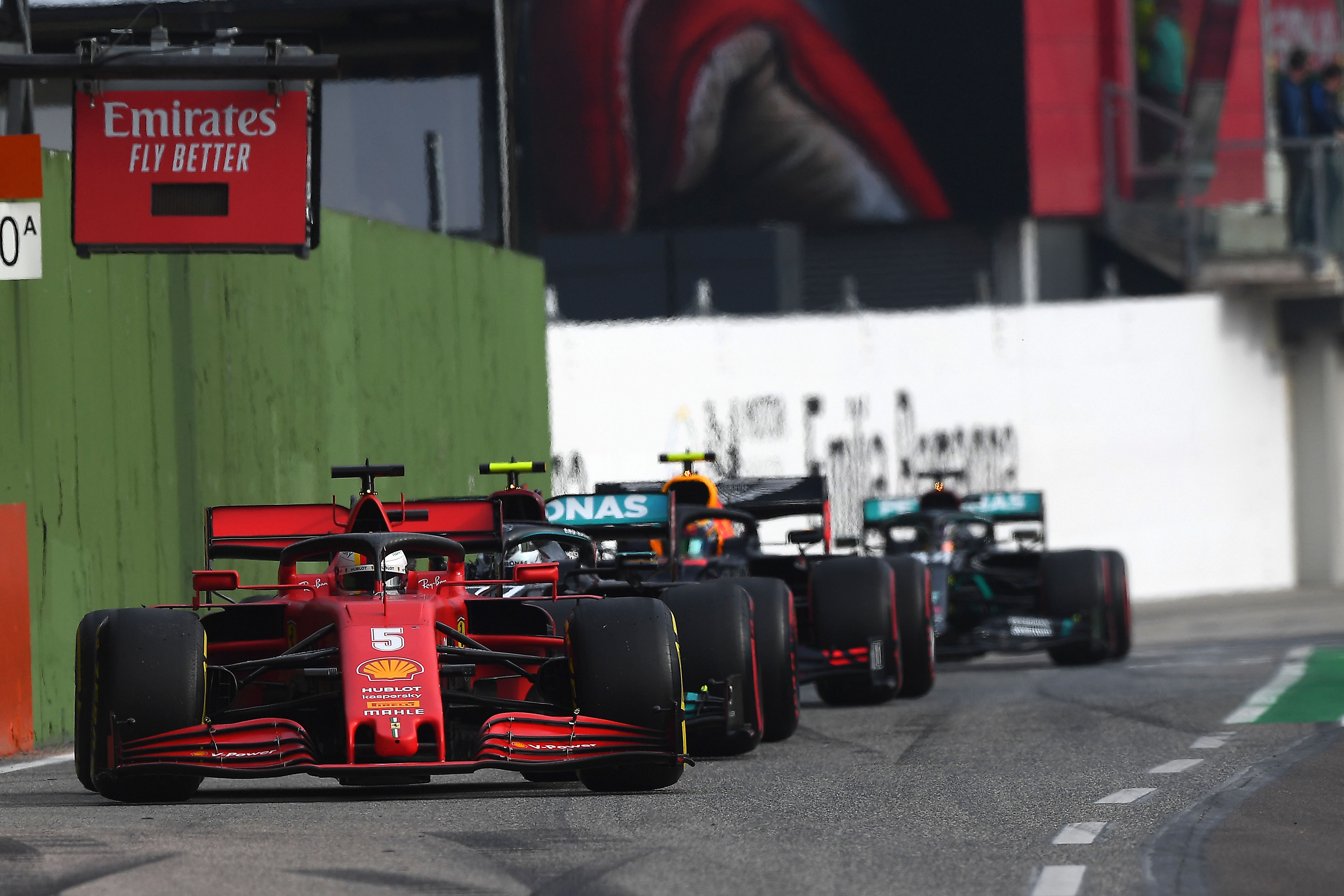
Then, for 2019, came the regulations attempting to outlaw the front wing assemblies that generated what was called aerodynamic ‘outwash’. The rulemakers believed this outwash was generating the turbulence that was affecting the performance of the following car. With these new regulations, the front wings became wider to match the maximum width of the car, but were also reduced in complexity – especially on the outboard ends. But the problem is, you never unlearn anything.
These changes came from a much larger and better-financed F1 regulation research group. The changes also came with the proviso that it was just a small token change in the direction of what will be introduced for what were originally the 2021 rules but have now been postponed to 2022.
After the teams started researching these changes for 2019, most said they were not seeing big differences in terms of reducing the turbulence coming off the leading car. I’m pretty sure you will agree with me that, if two cars of reasonably equal performance are trying to race, the following car still can’t run close enough to the leading car for long enough to put any real pressure on it.
Most overtaking that we see is with the dreaded DRS, but in my opinion that’s artificial and not what Formula 1 should be about.
Almost nearly two seasons into these changes, I thought it was time to look through the top three teams to see how they adapted to those regulations for 2019 and how they have evolved their concept since then.
Now, please don’t criticise me for using Ferrari in this comparison beside Red Bull and Mercedes. Currently, Renault has that coveted third-best position but at the start of the 2019 season, the major concept differences were between these three teams. This makes them the best for this comparison.
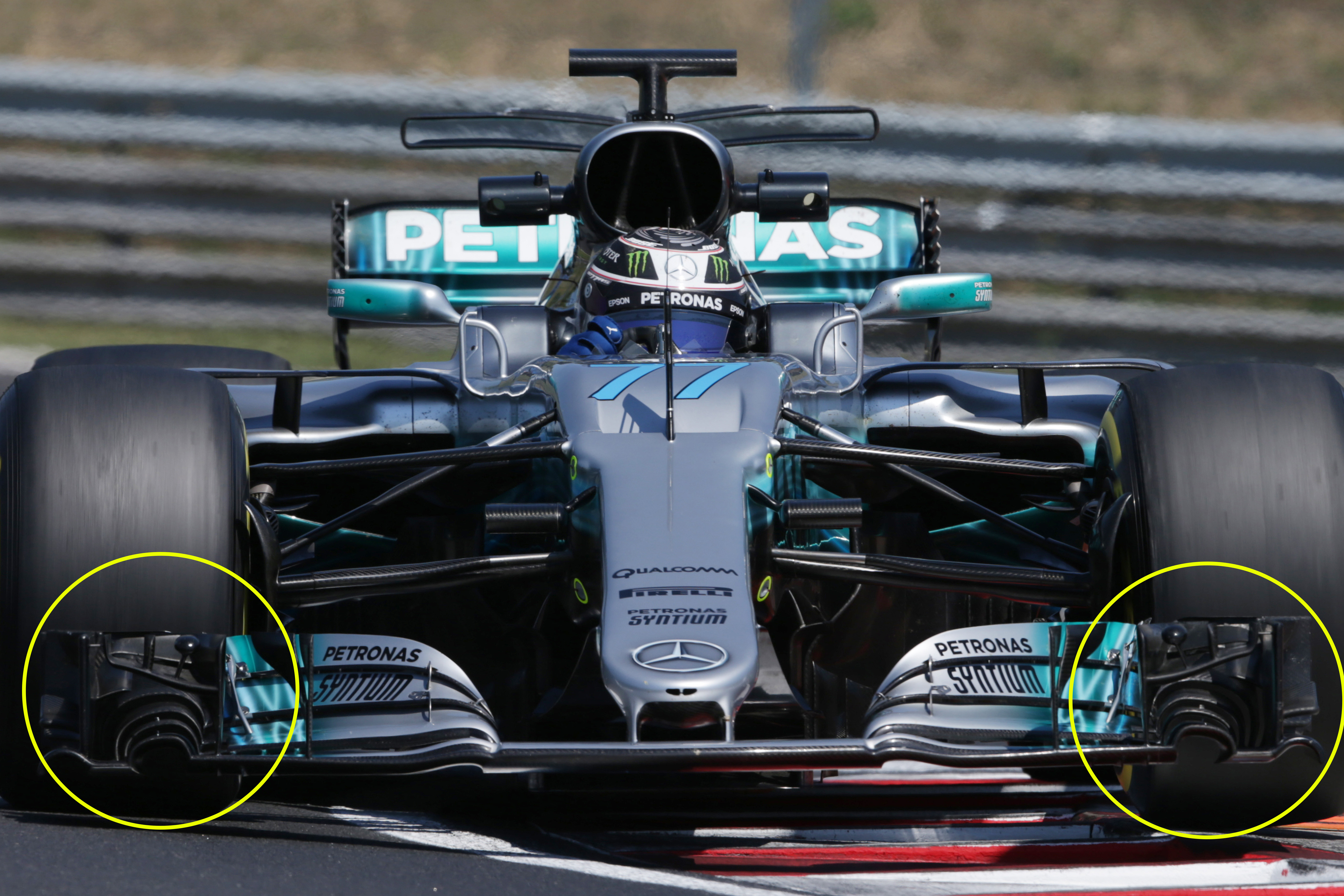
This yellow circle on the 2017 Mercedes is the area of the front wing the regulation changes focused on. There were lots of other small changes, but this area is the most visually obvious.
I am a fan of the fact that the changes simplified a far-too-complicated and expensive area, but by also increasing the width of the wing it meant that some degree of outwash was still possible.
More importantly, extending the wing in this area just makes it much more vulnerable. When the driver gets into the car, they can’t see the front wing, but with the narrower front wing it was at least protected by the front wheel.
In other words, they could judge where to place the front wheel and if that was done correctly the front wing would survive. Currently, if they place the front wheel close to the rear wheel of another car with some steering lock on, they say goodbye to the front wing, and as we have seen many occasions cut the other drivers rear tyre.
There is no single magic bullet that gives you the winning concept for an F1 car. But there are some areas that are just that little bit more important than others and the front wing is one of them. All of the components behind it only have the wake that is coming off the trailing edge of the front wing and front tyres to work with, so managing this wake is critical to the performance of the rest of the car.
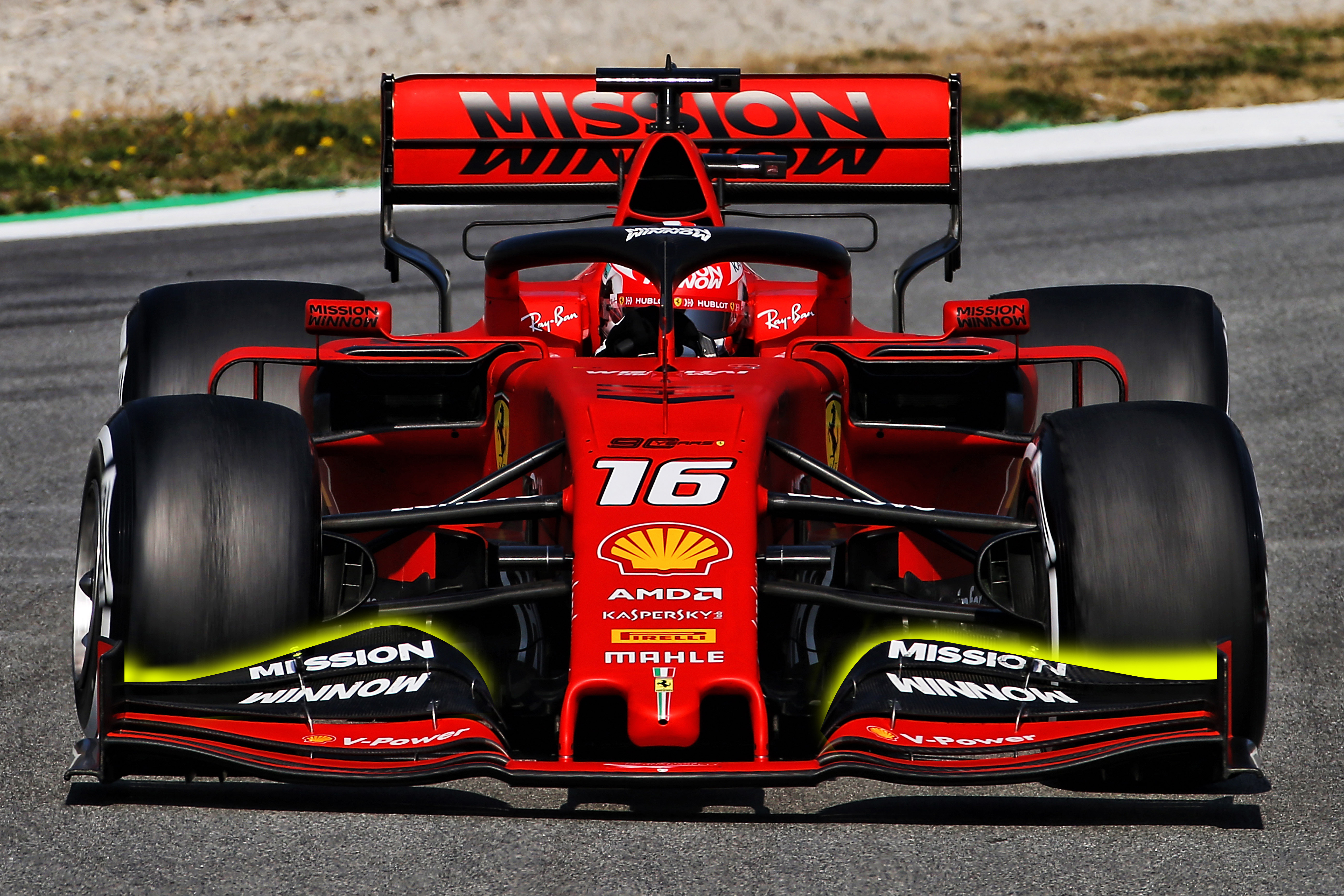
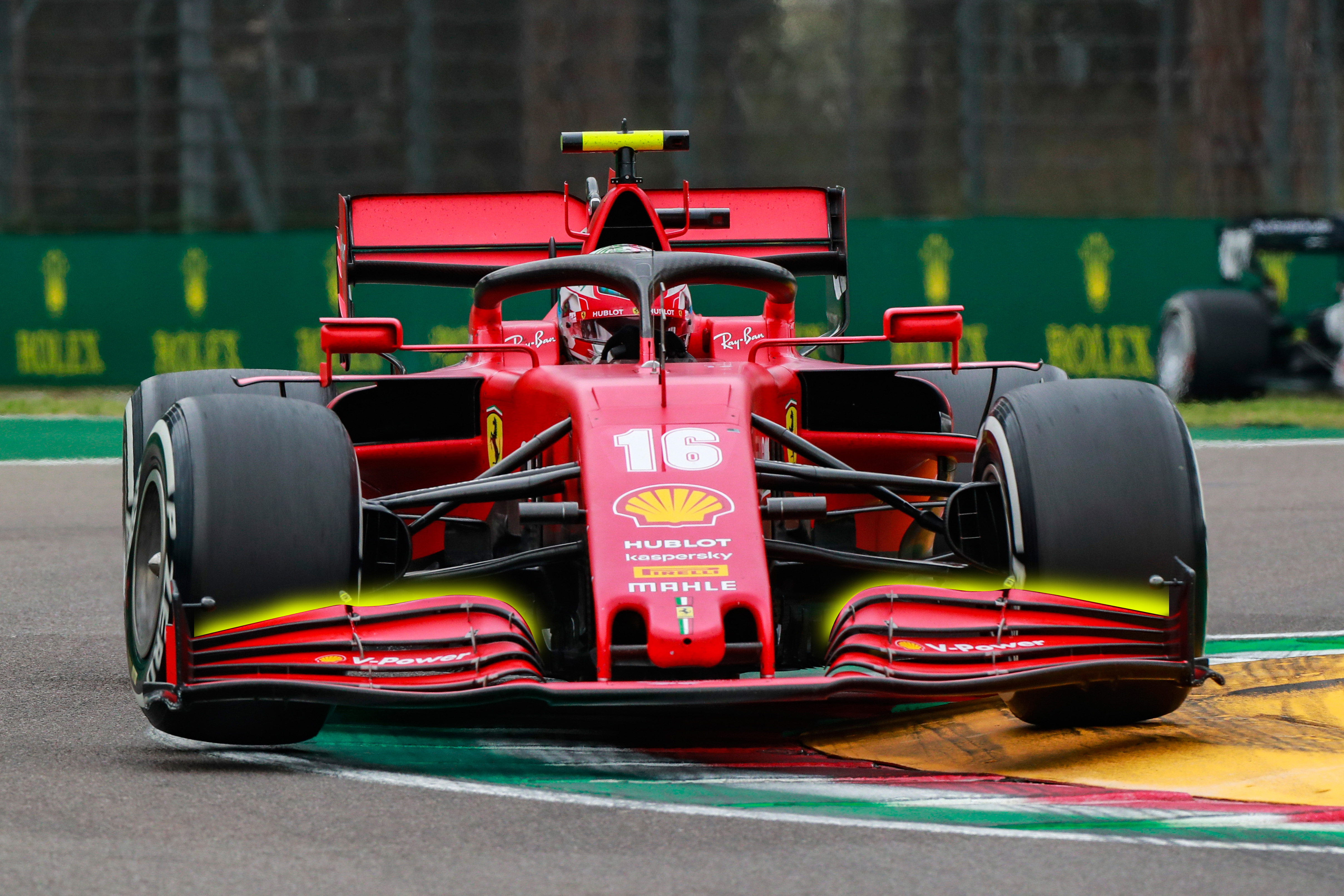 FERRARI
FERRARI
Comparing Ferrari’s initial 2019 front wing with the latest version, there have not been too many changes from its original concept. Small details have been changed on the leading and trailing edges, but that has been simple day-on-day development and all teams will have made little modifications in this area as they understand how the front wing loading balances out across its span.
Ferrari introduced what was called a low-loaded outboard end. Basically, the trailing edge of the last flap twists downward as it goes outboard. With this, you can induce some outwash as with the pre-2018 rules and it reduces the change on the front wing’s performance when steering lock is applied. Aerodynamic changes with steering lock are useful as long as you can use them positively.
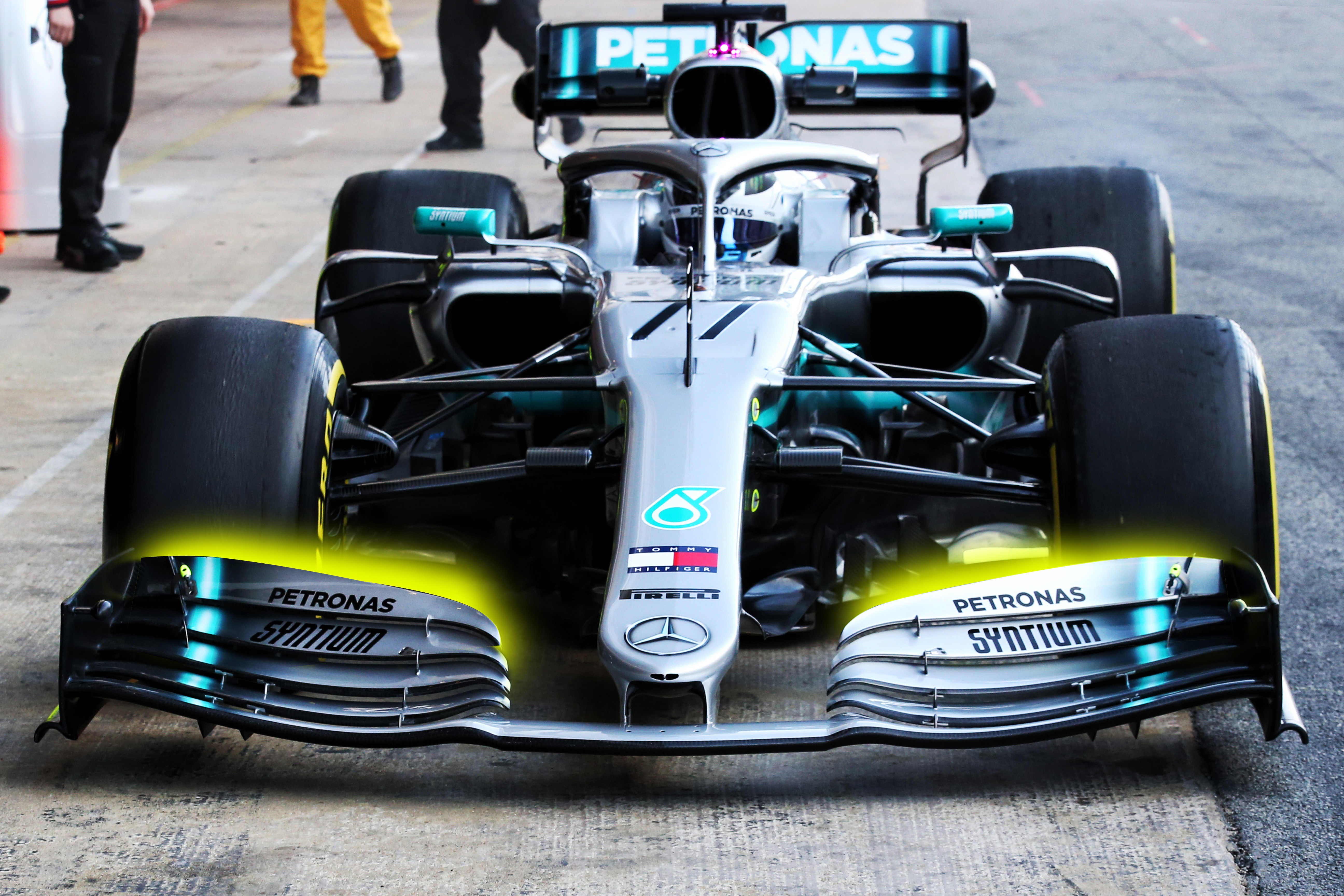
MERCEDES
When Mercedes first showed up for pre-season testing in 2019, it had gone in a different direction. The Mercedes front wing was much more highly outboard loaded, but more importantly the trailing end of the wing endplates were curved inwards to induce inwash.
Most other teams had gone about their development with a concept somewhere in between the concepts of Ferrari and Mercedes as far as the flap trailing edge profile was concerned but none had gone down the route of inwash endplates.
No team, no matter how well financed, makes the tooling required to make a complete front wing assembly and the wings required to go testing if they don’t believe in the concept, so it was interesting that it went all that way before realising it was the wrong direction.
Most teams questioned this at the time, but by the end of test two and by the time they went to Melbourne for the first race of the season, it had reacted to this situation. What Mercedes took there blew the rest away.
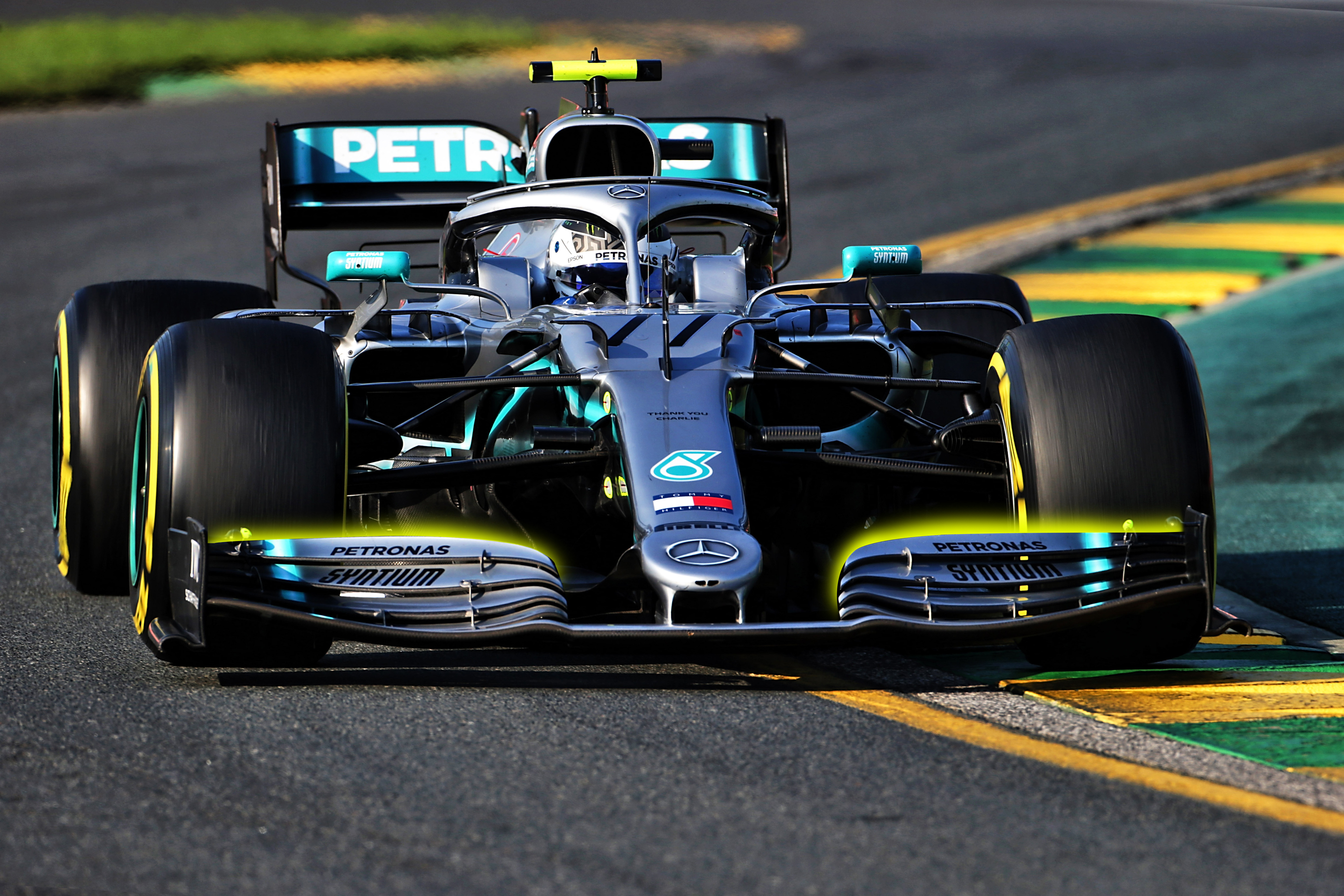 The team stated that these changes were all in the pipeline long before the first test started and that the package had been signed off several months earlier, but there initial package shows the direction Mercedes had been going in before realising it had gone the wrong way and that the ‘real’ package was always planned to phase in during the second half of testing.
The team stated that these changes were all in the pipeline long before the first test started and that the package had been signed off several months earlier, but there initial package shows the direction Mercedes had been going in before realising it had gone the wrong way and that the ‘real’ package was always planned to phase in during the second half of testing.
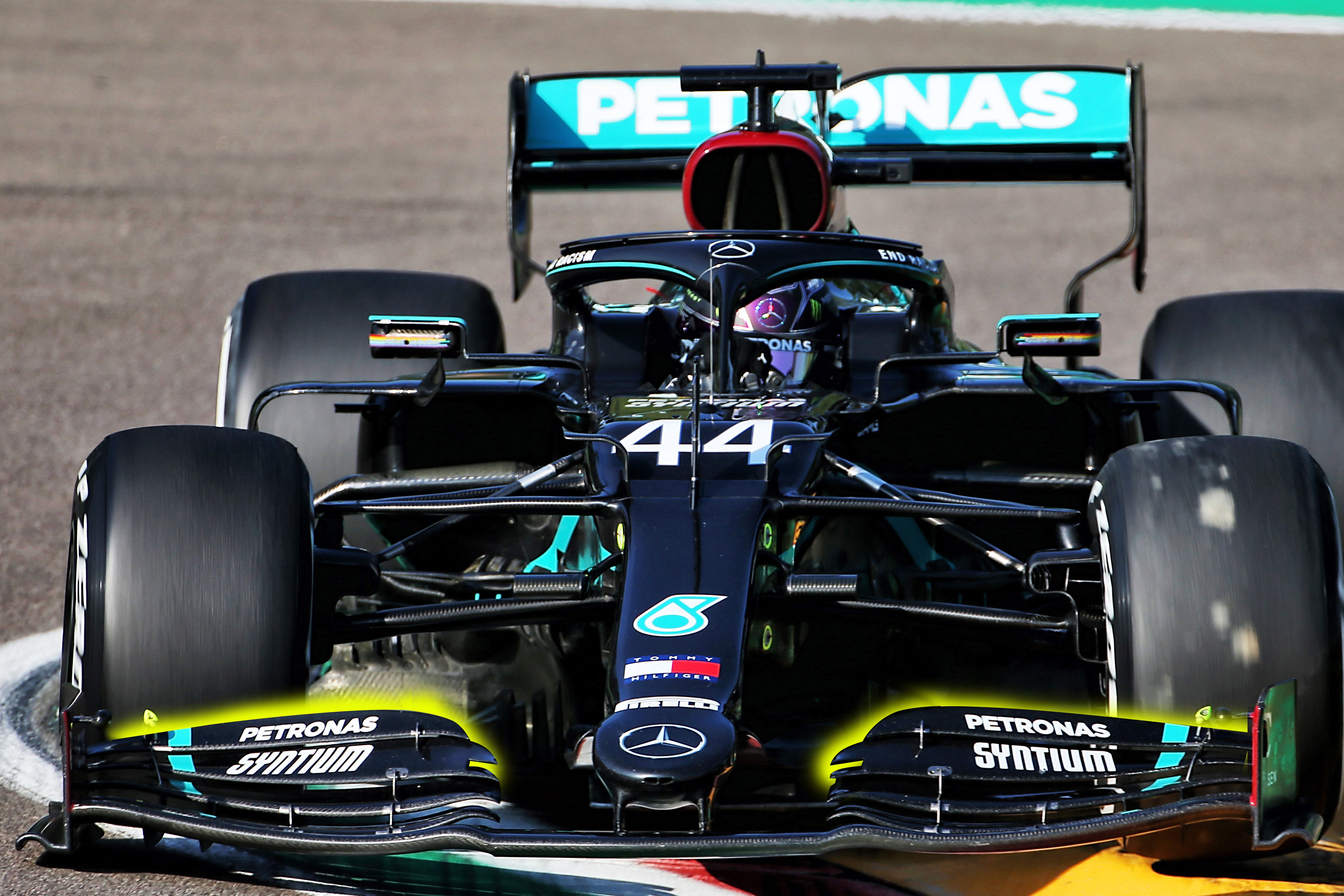
As the developments have been added to its cars over these last two seasons, it shows that Mercedes have gone more in the direction of Ferrari than the other way around.
You can’t argue with its success, but it’s interesting to see that it also takes note from what the others are up to.
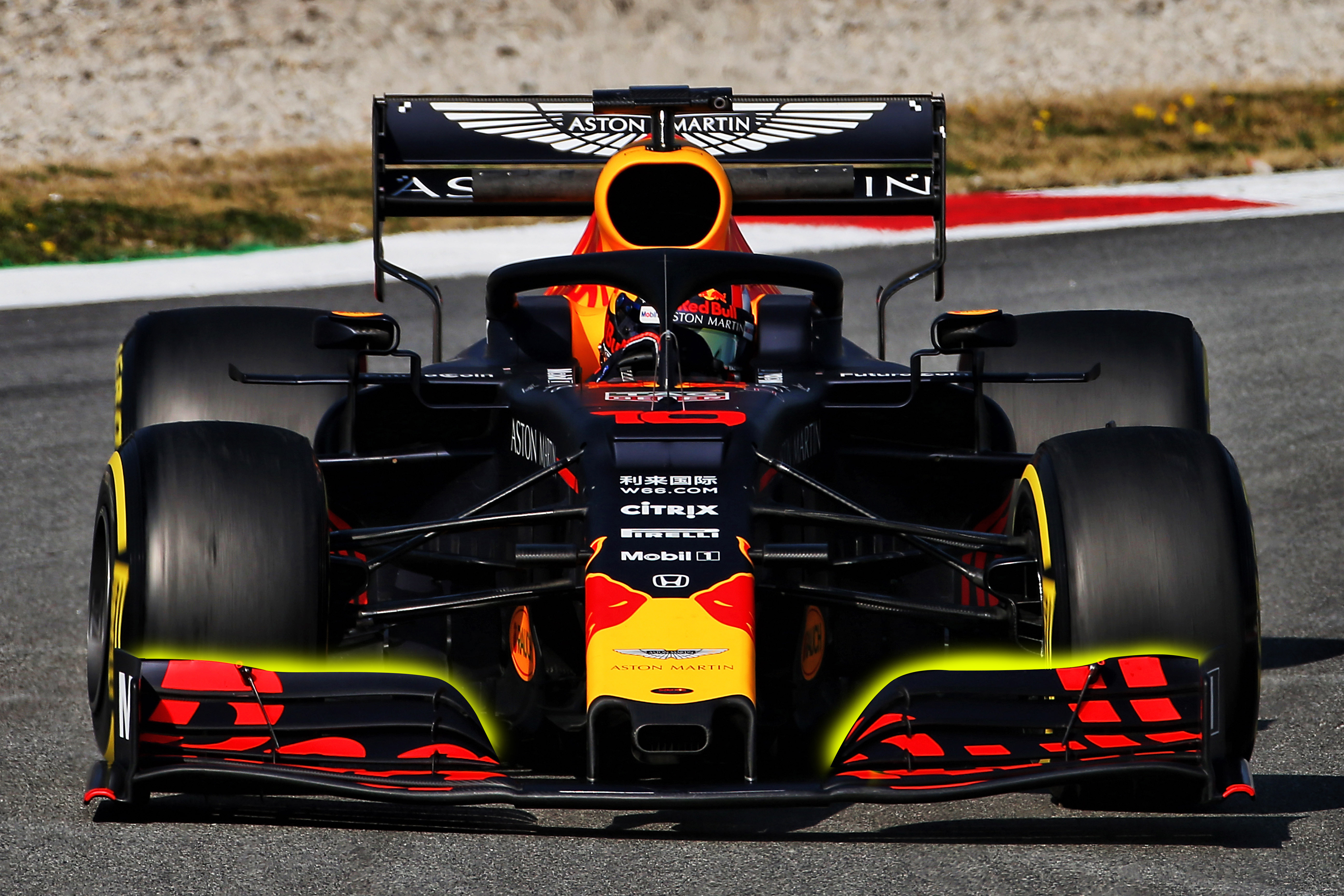
RED BULL
Red Bull started this regulation era with a highly-loaded outboard-end front wing concept. I said at the time that the concept of what was then its junior team – Toro Rosso – was more in line with the Ferrari concept and we would quickly see which was the correct direction. But that didn’t really happen and both pursued their original concepts.
As the races were ticked off, Red Bull moved more towards the Ferrari concept but still retained an outboard loaded section. I believe Red Bull is using this area to move the aerodynamic centre of pressure forward when steering lock is applied. Normally, these cars understeer in medium and slow speed corners and if you can increase the front grip as you apply more lock then you can reduce this understeer.
The problem with this is that the rate the driver puts on the steering lock is critical to the response of this feature. If you apply the steering lock too quickly, it can very easily make the car pointy on entry so it is something that the driver really needs to come to terms with. I wouldn’t be surprised if this is the area that Alex Albon is struggling with.
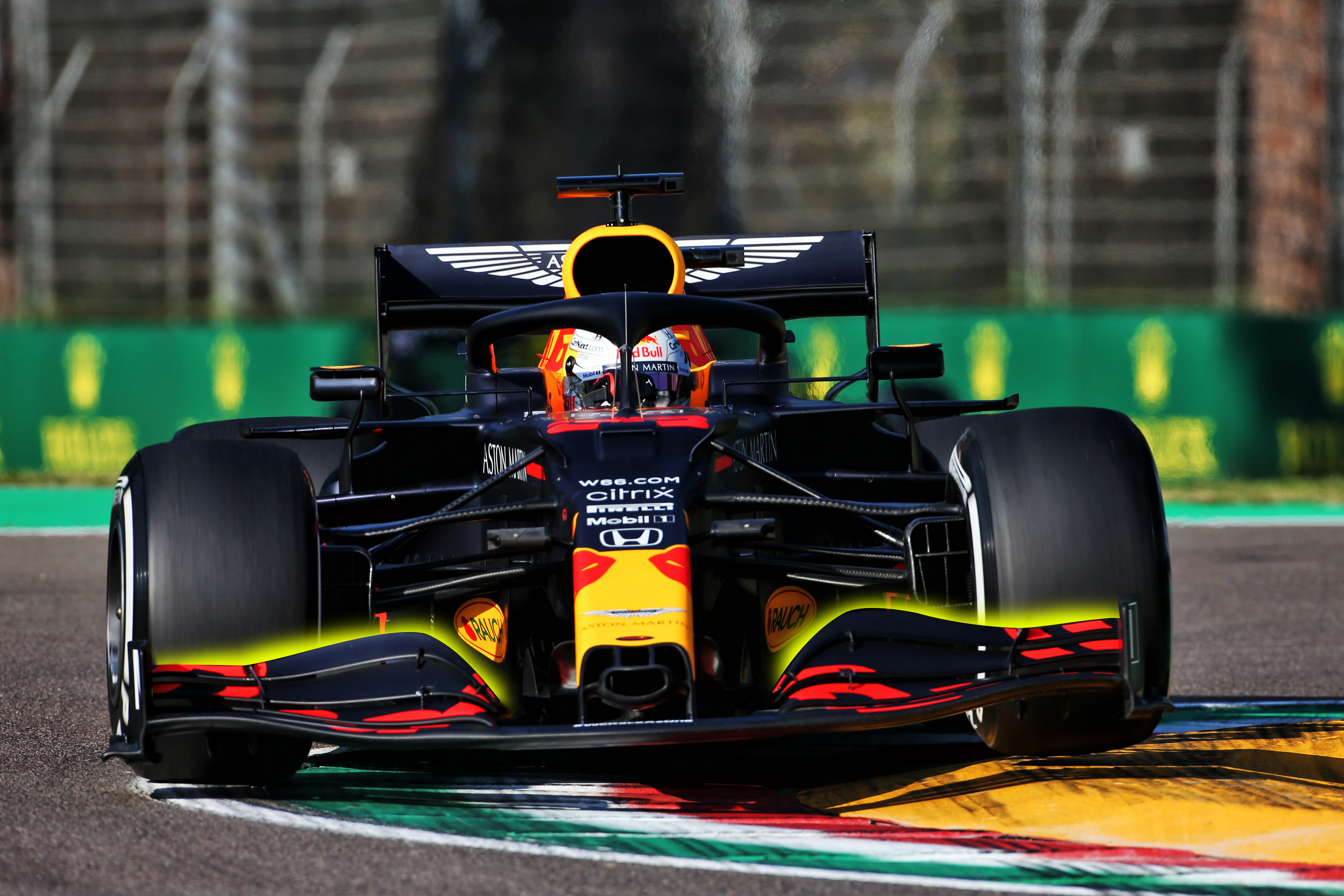
To sum up, there is no magic bullet in any concept, it is all about getting everything to work together. The team’s objective is to build as fast a car as it can and not many teams actually put any priority into making the car work in turbulence. While qualifying defines the grid position and the fastest car ends up at the front, being that car will always be the priority because all things being equal that car normally goes on to take the win.
Even though the regulation writers are focusing on creating rules to improve racing, the teams are working in the opposite direction. One-lap performance is still the main objective and that is the simple answer to why we have not seen any changes in the cars ability to follow each other closer even with all these regulation changes.






